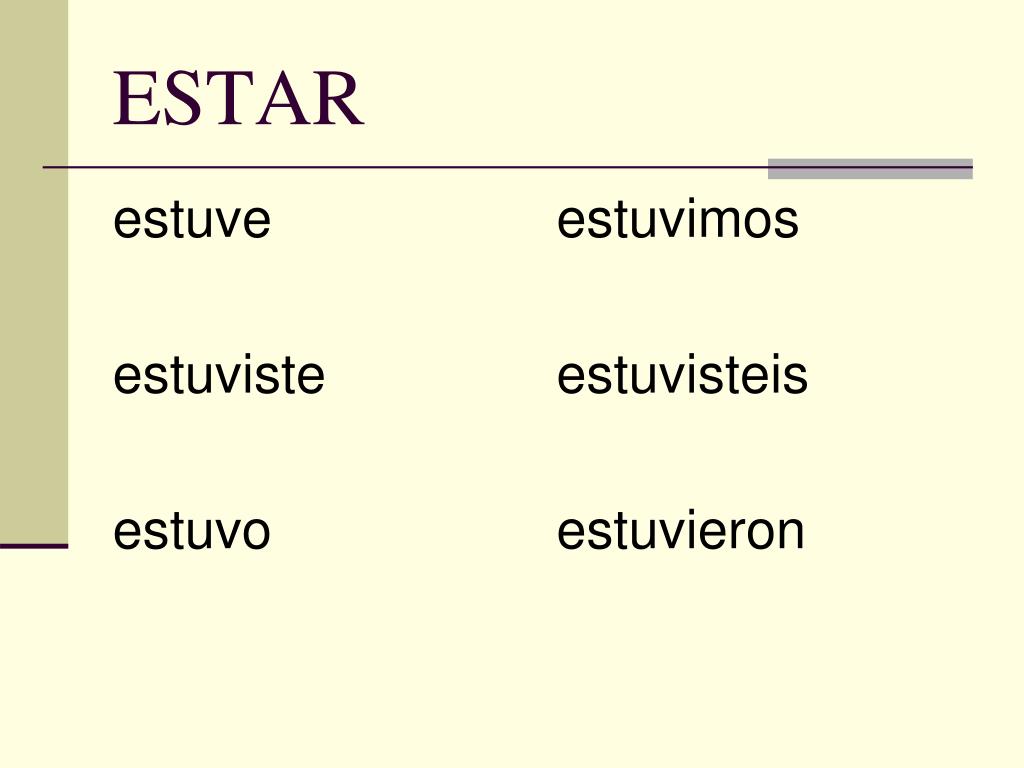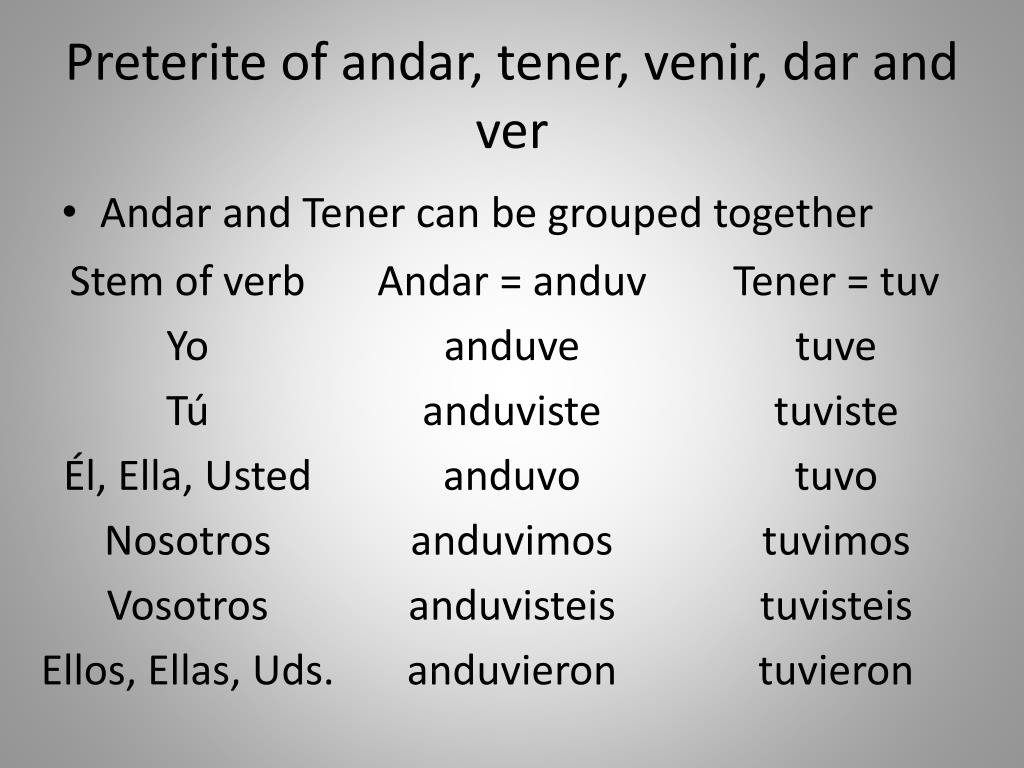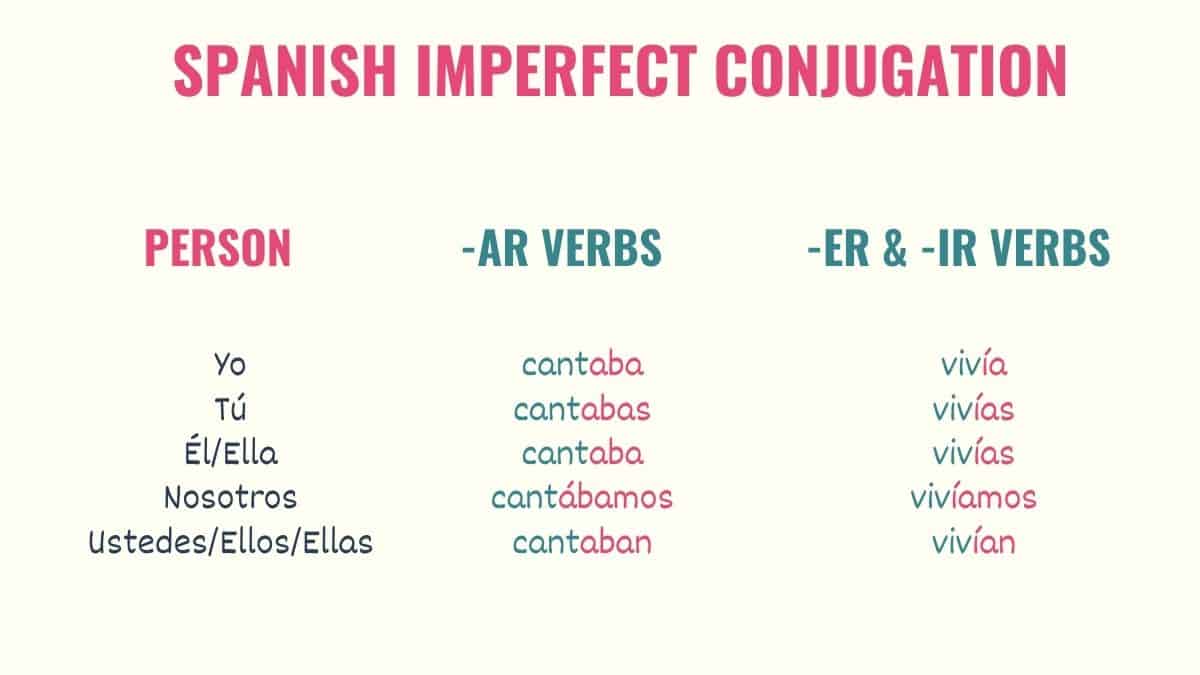

But nonetheless, you still have two different forms you need to memorize.

Luckily, you can use whichever one you like. To make it worse, there are always two different forms of the verb. The imperfect subjunctive is a tricky conjugation that requires a lot of practice. Let’s move on to what is – by far – the most difficult way to use this Spanish verb.
ESTAR PRETERITE ENDINGS HOW TO
Let’s look at some examples of how to use the present subjunctive with Estar. This is super important as it makes the difference between este (this) and esté (is). This verb is special in that you’ll need to include accent marks for every form except the first person plural ( nosotros ). Here, make sure to pay close attention to the accent marks: Subject Pronoun Like it is in many other tenses, it’ll be irregular in the present subjunctive. In that aspect, the verb Estar isn’t so difficult. While today we’re not focusing on the meaning behind the subjunctive, just the conjugation form. The subjunctive mood tends to give learners problems – no matter what the verb. Now we’re going to be moving on to some of the more difficult Spanish topics.

¿ Están listos para empezar? – Are they ready to start?.❽ónde está el restaurante? – Where is the restaurant?.

Let’s look at a couple of examples with these verbs: This is different from most regular -AR verbs, so it’s absolutely a unique case. We’re going to start off strong by going through the present indicative form of the verb: Subject PronounĪs you can see – the yo form is completely irregular and the endings for the second and third person always have accent marks. You’re probably already familiar with the present indicative tense for Estar, but doing some reviewing never hurt anyone! It’s a highly irregular verb form, just like most basic verbs. So we’re keeping things simple today with the Estar conjugation chart, so you’ll always be ready to use this helpful verb in all tenses. The Spanish verb Estar is one of the most important verbs in the language, and you’ll be using it all the time – so it’s important to learn how to master it ASAP. In Spanish Preterite Tense, the 3 regular patterns are for verbs ending in ar, er, and ir.Today we’re getting down to the basics of Spanish grammar by talking about one of the very first verbs you’ll need to master in your Spanish-learning journey. A verb which does not follow these patterns exactly is called an irregular verb. Irregular VerbsĪ verb is called a regular verb when its conjugation follows a typical pattern. The imperfect tense is rarely irregular and can be easily conjugated from this form, which is the yo, and él/ella conjugation. The present perfect tense is formed by combining the auxiliary verb haber with the participio. Estar appears on the 100 Most Used Spanish Preterite Tense Verbs Poster as the 4th most used irregular verb.įor the present tense conjugation, go to Estar Conjugation - Present Tense. Estar is conjugated as an irregular verb in the preterite tense.


 0 kommentar(er)
0 kommentar(er)
